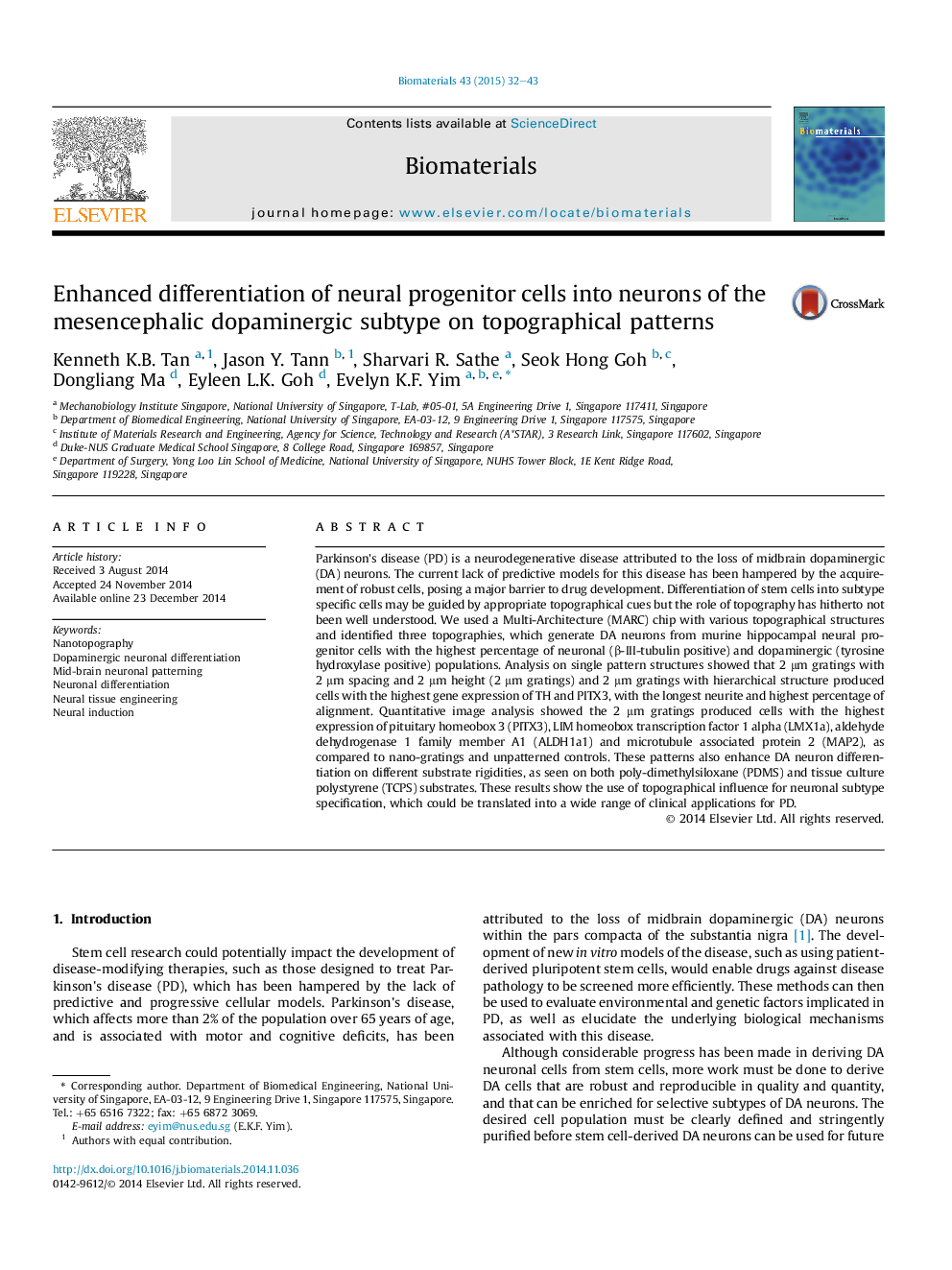| Article ID | Journal | Published Year | Pages | File Type |
|---|---|---|---|---|
| 5765 | Biomaterials | 2015 | 12 Pages |
Parkinson's disease (PD) is a neurodegenerative disease attributed to the loss of midbrain dopaminergic (DA) neurons. The current lack of predictive models for this disease has been hampered by the acquirement of robust cells, posing a major barrier to drug development. Differentiation of stem cells into subtype specific cells may be guided by appropriate topographical cues but the role of topography has hitherto not been well understood. We used a Multi-Architecture (MARC) chip with various topographical structures and identified three topographies, which generate DA neurons from murine hippocampal neural progenitor cells with the highest percentage of neuronal (β-III-tubulin positive) and dopaminergic (tyrosine hydroxylase positive) populations. Analysis on single pattern structures showed that 2 μm gratings with 2 μm spacing and 2 μm height (2 μm gratings) and 2 μm gratings with hierarchical structure produced cells with the highest gene expression of TH and PITX3, with the longest neurite and highest percentage of alignment. Quantitative image analysis showed the 2 μm gratings produced cells with the highest expression of pituitary homeobox 3 (PITX3), LIM homeobox transcription factor 1 alpha (LMX1a), aldehyde dehydrogenase 1 family member A1 (ALDH1a1) and microtubule associated protein 2 (MAP2), as compared to nano-gratings and unpatterned controls. These patterns also enhance DA neuron differentiation on different substrate rigidities, as seen on both poly-dimethylsiloxane (PDMS) and tissue culture polystyrene (TCPS) substrates. These results show the use of topographical influence for neuronal subtype specification, which could be translated into a wide range of clinical applications for PD.
